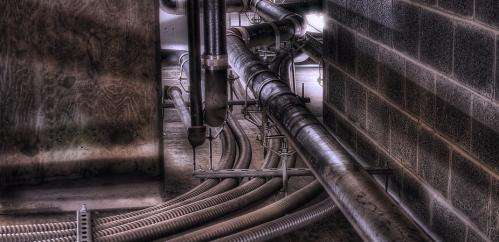X-ray vision for road diggers: The next quantum leap?

Quantum mechanics has been hailed as the next big thing in technology. And quantum computers are a media favourite. But there is a little-known quantum technology that can peer beneath the earth, which could be ready before the quantum computing revolution comes about.
Quantum technology makes use of the counter-intuitive consequences of quantum mechanics – the principal theory explaining our world on a microscopic scale. One of these consequences is that a single object can be in several different places (or in several different "states") at the same time. In the quantum world, strange as it may seem, a person could pass a tree simultaneously on the right and the left side, or be wearing business clothes and beach attire simultaneously.
The difficulty in realising quantum technologies and why quantum computers are not yet commercially available lies in another peculiar feature – "it only works if no one looks". Our everyday experience is of large objects that can be easily observed, forcing them to a well-defined state and position. At the microscopic objects, such as atoms and photons, observation becomes more difficult and quantum mechanics takes over.
Such technology relies on meticulous shielding of quantum particles inside from any possible observation. Quantum communication makes a virtue of this challenge – any eavesdropper observing information encoded in quantum particles will force these particles to give up any superposition and choose a specific state – a change which can be detected at the other end of the line. Thus the in principle absolutely secure quantum communication systems are currently the only reliable quantum technology in the market, which find use in the finance sector.
Four million holes are dug in UK roads every year. But only a third of time do the diggers know what infrastructure may be buried under the road. This makes the task much slower because of the care needed. The result is more traffic troubles. Soon, quantum "gravimeters" will revolutionise this business.
Gravity appears to be the same anywhere on Earth. But a sensitive quantum gravity sensor can pick up variations, by letting single atoms explore different paths in the gravitational field of the Earth. From those differences one can infer what lies beneath the Earth's surface. The precision of this method is so great that laboratory prototypes can detect a nearby person by their gravity field.
In principle one can infer the value of gravity using a ruler to record the position of the falling apple over time. For the quantum sensor the ruler is replaced by a laser beam and the apple by a cloud of atoms.
The process is a little more complicated, of course. First the 1997 Nobel prize-winning technology of laser cooling has to be brought on stage. It is used to collect the atoms inside a vacuum chamber and bring them close to a standstill, such they can be observed the drop without any disturbance. Then three laser pulses are used to invoke the "quantum magic" and send each of the atoms along two simultaneous but different paths in the gravity field, which recombine at the end. Only at this point one is allowed to look at the state of the atoms, which encodes the value of gravity.
Currently all this technology can be packaged into the size of a large backpack for a six-figure price tag, making it suitable for high-value applications such as oil and mineral exploration. However, soon sizes and prices will shrink by orders of magnitude, moving the applications into the roadworks and possibly even private use domain.
Quantum gravity sensors will be the first in this new industrial revolution, with remarkably diverse applications. Helping determine the spatial extent of aquifers that have run dry or or the equivalent processes in oil and gas recovery. It can also help climate change science (snow cover of mountains and magnitude of ocean currents) and archaeology ("seeing" without digging).
Neelie Kroes, vice president of the European Union (EU), called these sensors the "coolest thing" at the 2013 EU Information and Communication Technologies meeting this week in Vilnius. This area, which brings together the oldest part of physics, gravity, with one of the most recent, ultra-cold quantum atomic gases, shows the capacity of scientific research driven by curiosity to have large and unexpected dividends.
Source: The Conversation
This story is published courtesy of The Conversation (under Creative Commons-Attribution/No derivatives).
![]()



















